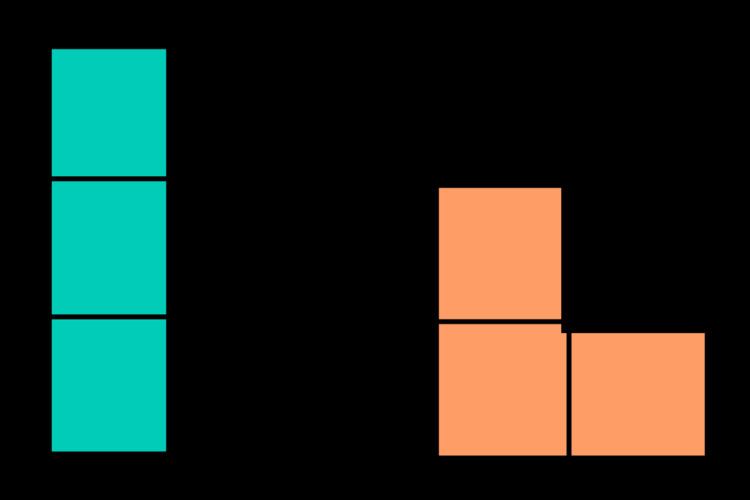 | ||
A tromino is a polyomino of order 3, that is, a polygon in the plane made of three equal-sized squares connected edge-to-edge.
Contents
Symmetry and enumeration
When rotations and reflections are not considered to be distinct shapes, there are only two different free trominoes: "I" and "L" (the "L" shape is also called "V").
Since both free trominoes have reflection symmetry, they are also the only two one-sided trominoes (trominoes with reflections considered distinct). When rotations are also considered distinct, there are six fixed trominoes: two I and four L shapes. They can be obtained by rotating the above forms by 90°, 180° and 270°.
Rep-tiling and Golomb's tromino theorem
Both types of tromino can be dissected into
Motivated by the mutilated chessboard problem, Solomon W. Golomb used this tiling as the basis for what has become known as Golomb's tromino theorem: if any square is removed from a
